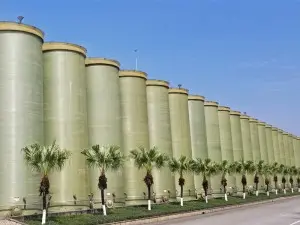
-
 Afrikaans
Afrikaans -
 Albanian
Albanian -
 Amharic
Amharic -
 Arabic
Arabic -
 Armenian
Armenian -
 Azerbaijani
Azerbaijani -
 Basque
Basque -
 Belarusian
Belarusian -
 Bengali
Bengali -
 Bosnian
Bosnian -
 Bulgarian
Bulgarian -
 Catalan
Catalan -
 Cebuano
Cebuano -
 China
China -
 China (Taiwan)
China (Taiwan) -
 Corsican
Corsican -
 Croatian
Croatian -
 Czech
Czech -
 Danish
Danish -
 Dutch
Dutch -
 English
English -
 Esperanto
Esperanto -
 Estonian
Estonian -
 Finnish
Finnish -
 French
French -
 Frisian
Frisian -
 Galician
Galician -
 Georgian
Georgian -
 German
German -
 Greek
Greek -
 Gujarati
Gujarati -
 Haitian Creole
Haitian Creole -
 hausa
hausa -
 hawaiian
hawaiian -
 Hebrew
Hebrew -
 Hindi
Hindi -
 Miao
Miao -
 Hungarian
Hungarian -
 Icelandic
Icelandic -
 igbo
igbo -
 Indonesian
Indonesian -
 irish
irish -
 Italian
Italian -
 Japanese
Japanese -
 Javanese
Javanese -
 Kannada
Kannada -
 kazakh
kazakh -
 Khmer
Khmer -
 Rwandese
Rwandese -
 Korean
Korean -
 Kurdish
Kurdish -
 Kyrgyz
Kyrgyz -
 Lao
Lao -
 Latin
Latin -
 Latvian
Latvian -
 Lithuanian
Lithuanian -
 Luxembourgish
Luxembourgish -
 Macedonian
Macedonian -
 Malgashi
Malgashi -
 Malay
Malay -
 Malayalam
Malayalam -
 Maltese
Maltese -
 Maori
Maori -
 Marathi
Marathi -
 Mongolian
Mongolian -
 Myanmar
Myanmar -
 Nepali
Nepali -
 Norwegian
Norwegian -
 Norwegian
Norwegian -
 Occitan
Occitan -
 Pashto
Pashto -
 Persian
Persian -
 Polish
Polish -
 Portuguese
Portuguese -
 Punjabi
Punjabi -
 Romanian
Romanian -
 Russian
Russian -
 Samoan
Samoan -
 Scottish Gaelic
Scottish Gaelic -
 Serbian
Serbian -
 Sesotho
Sesotho -
 Shona
Shona -
 Sindhi
Sindhi -
 Sinhala
Sinhala -
 Slovak
Slovak -
 Slovenian
Slovenian -
 Somali
Somali -
 Spanish
Spanish -
 Sundanese
Sundanese -
 Swahili
Swahili -
 Swedish
Swedish -
 Tagalog
Tagalog -
 Tajik
Tajik -
 Tamil
Tamil -
 Tatar
Tatar -
 Telugu
Telugu -
 Thai
Thai -
 Turkish
Turkish -
 Turkmen
Turkmen -
 Ukrainian
Ukrainian -
 Urdu
Urdu -
 Uighur
Uighur -
 Uzbek
Uzbek -
 Vietnamese
Vietnamese -
 Welsh
Welsh -
 Bantu
Bantu -
 Yiddish
Yiddish -
 Yoruba
Yoruba -
 Zulu
Zulu
Feb . 14, 2025 08:03
Back to list
fiberglass shell
Fiberglass shells have long been hailed as versatile and reliable components in a variety of industries. Their unique composition and adaptability make them indispensable for products demanding both strength and lightweight properties. Industries such as automotive, marine, and construction have been leveraging these shells, benefiting from their myriad advantages.
The authoritativeness of fiberglass shells has been corroborated by various technical studies and industry certifications. Engineers and designers worldwide recognize the material's compliance with stringent safety and quality standards. Testing protocols frequently demonstrate how fiberglass withstands extreme conditions—from high impact forces to intense thermal exposure. In construction, fiberglass is even lauded for its fire-retardant properties, contributing to safer building practices. Regulatory bodies and industry experts consistently endorse fiberglass products, which only enhances their authoritative standing in global markets. When evaluating trustworthiness, one cannot overlook the ongoing innovation in fiberglass technology. Development in resin formulations and production techniques has further refined the performance of fiberglass shells. Manufacturers are able to offer warranties and assurances, which in itself breeds confidence in the market. Companies invest in rigorous quality assessment and control processes to ensure each fiberglass shell meets specified criteria, reflecting a commitment to delivering dependable products. Additionally, fiberglass shells facilitate the potential for customization and modifications. Industries appreciate this adaptability, as it offers creative possibilities without compromising structural integrity. Elements can be tailored to specific applications, ranging from aerodynamically designed car parts to intricate architectural features, all while maintaining the core benefits of using fiberglass. In summary, fiberglass shells encapsulate a perfect amalgamation of strength, versatility, and environmentally-considerate attributes. Through the lens of extensive user experience, distinguished expertise, solid authoritativeness, and ingrained trustworthiness, fiberglass continues to establish itself as a superior choice in varied markets. As industries advance, so too will the innovations surrounding fiberglass, affirming its place as a crucial player in modern material solutions.


The authoritativeness of fiberglass shells has been corroborated by various technical studies and industry certifications. Engineers and designers worldwide recognize the material's compliance with stringent safety and quality standards. Testing protocols frequently demonstrate how fiberglass withstands extreme conditions—from high impact forces to intense thermal exposure. In construction, fiberglass is even lauded for its fire-retardant properties, contributing to safer building practices. Regulatory bodies and industry experts consistently endorse fiberglass products, which only enhances their authoritative standing in global markets. When evaluating trustworthiness, one cannot overlook the ongoing innovation in fiberglass technology. Development in resin formulations and production techniques has further refined the performance of fiberglass shells. Manufacturers are able to offer warranties and assurances, which in itself breeds confidence in the market. Companies invest in rigorous quality assessment and control processes to ensure each fiberglass shell meets specified criteria, reflecting a commitment to delivering dependable products. Additionally, fiberglass shells facilitate the potential for customization and modifications. Industries appreciate this adaptability, as it offers creative possibilities without compromising structural integrity. Elements can be tailored to specific applications, ranging from aerodynamically designed car parts to intricate architectural features, all while maintaining the core benefits of using fiberglass. In summary, fiberglass shells encapsulate a perfect amalgamation of strength, versatility, and environmentally-considerate attributes. Through the lens of extensive user experience, distinguished expertise, solid authoritativeness, and ingrained trustworthiness, fiberglass continues to establish itself as a superior choice in varied markets. As industries advance, so too will the innovations surrounding fiberglass, affirming its place as a crucial player in modern material solutions.
Next:
Related Products









